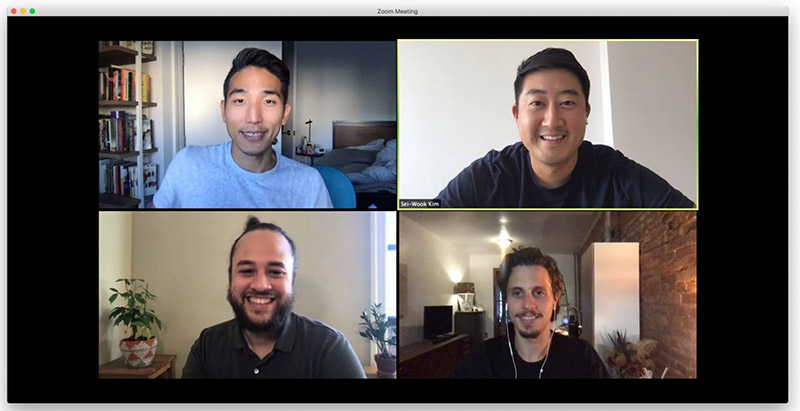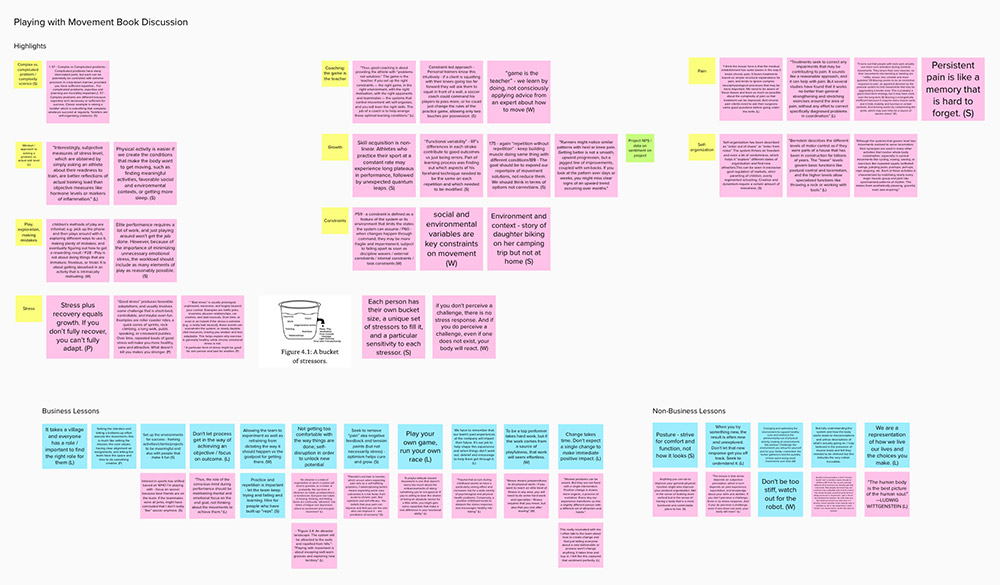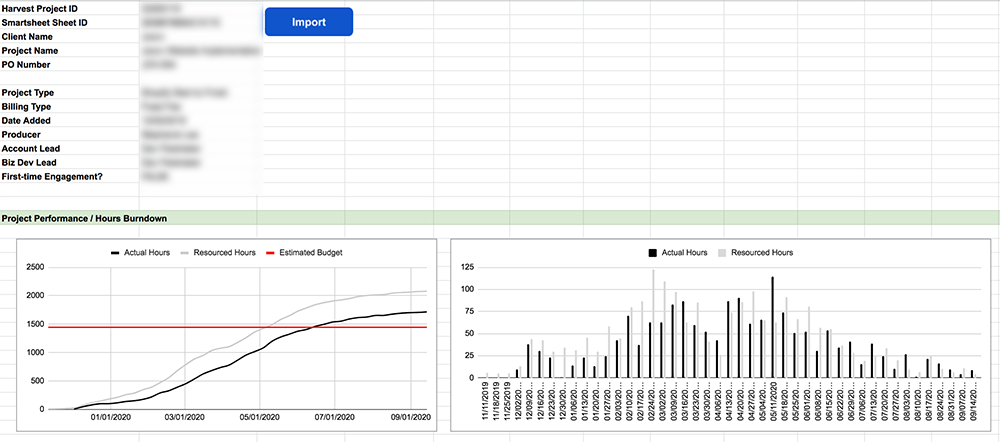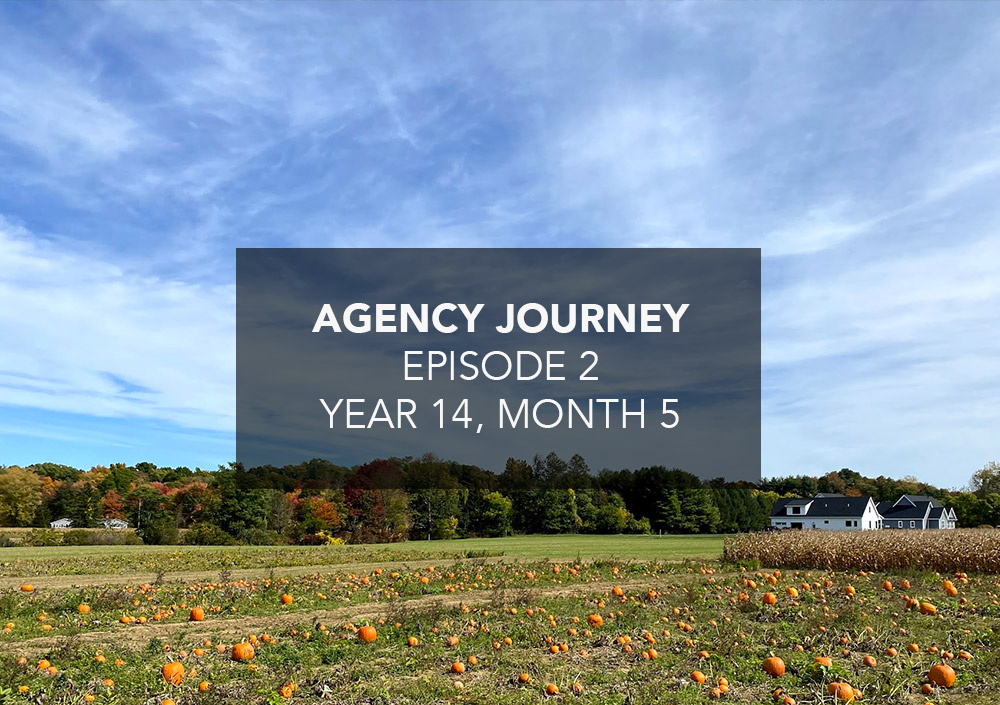As someone who grew up watching and playing a lot of sports, especially football and basketball, the final quarter of the year in business excites me in a way that the 4th quarter might motivate and energize a competitive player. If there’s anything left in the tank, I want to put it all out there. Knowing there’s a holiday break to end the year, I want to give it my all and get lots of things done before the year is up, setting us up for a strong start next year.
It’s with this mindset that I’ve been eyeing Q4 of this year with a great deal of optimism and energy. We’ve been through a lot as a company during a very tumultuous year for the world. But rather than hoping for a fast finish and wishing 2020 quickly gone forever, I hope we can finish strong and look back to say that when things got hard or uncertain, we stepped up and tried our best.
Anyway, enough pep talk. Here’s Episode 2.
About Agency Journey: This is a monthly series detailing the happenings of my agency Barrel, founded in 2006. You can find previous episodes here.
Highlights
Promotions
We had a handful of promotions in the past 4 weeks: a Producer was promoted to Senior Producer, a Junior Designer was promoted to Designer, and a Designer was promoted to Senior Designer.
I have to admit that historically, Sei-Wook and I have had some really bad misses when it comes to promotions. In our 14+ years of running Barrel, we’ve made, one too many times, the mistake of promoting too early and also promoting without much of a plan, both contributing to frustrations and feelings of being set up to fail, which inevitably led to the employees’ departures.
Thankfully, we have smart leaders on our team making the call now. For example, our partner and Creative Director Lucas, who leads the Creative team, has done a commendable job of carefully structuring the roles in his discipline and communicating for his team members what is required of each person to make it to the next level. Not only that, he’s done a great job of providing on-going feedback and coaching to develop talent while keeping very high standards at every position. This is how he’s been able to develop a deeply talented Creative team that includes two Senior Designers who started at the Junior level and can confidently lead and oversee some of our most challenging client engagements.
Part of Lucas’s success in this realm comes from his patience when making the decision to promote someone. Whereas Sei-Wook and I made the mistake in the past of promoting reactively to retain someone short-term or to match a title to what we felt was a high salary, Lucas has been methodical in mentally preparing his team members for their next role, gradually upping their level of responsibility, and reminding them that a promotion means a change in the way they’re evaluated. To the last point, what was considered exceptional or impressive at one level might be seen as table stakes once someone is promoted. Laying this groundwork has allowed us to see higher rates of success on the Creative team as people have been promoted from one level to the next. The result? A department with an experienced core of leaders and a deep bench of up-and-coming stars all putting out phenomenal work.
Top of Mind
Hiring for Director of Client Services
I mentioned in my last Agency Journey episode that we were hoping to bring in a new Director of Client Services:
Where we see the opportunity is in splitting out business development from Client Services and making Client Services focused solely on account management and strategy for existing clients. As of this past week, I started looking for a Director of Client Services. I’m hoping that we can bring in someone who can focus on account growth full-time and bring experience and know-how that exceeds anything I could have done on my own.
After interviewing numerous candidates over the past month, we’ve begun to narrow down our choices. We hope to make a final decision by the end of the month at the latest. The process has been time-consuming but also very energizing as I’ve had some really great conversations with smart people who have far more experience and know-how than me in building a client services discipline.
As part of our interview process overhaul, we began incorporating a “written interview” that includes detailed answers to a handful of questions as well as a prompt for a one-page memo. The responses have been really interesting, and I regret not having had this component sooner. To have a written sample like this as part of the consideration set for the candidate is really helpful as it provides some clues on the candidate’s ability to communicate, organize thoughts, and frame arguments.
Initiatives to Make the Business Stronger
Last week, the Barrel partners had our quarterly planning meeting, an all-day session to reflect on the past quarter and to set the initiatives and priorities for the new quarter. The meeting is also where we come to discuss our quarterly reading assignment, a book for the four of us to finish and come prepared with favorite takeaways and highlights.

Posing for a team photo after a long day of planning for the quarter.
One tweak we made to our meeting for this quarter was to push up the book discussion from after lunch to early in the morning. Back in July, we felt that discussing the book after we had a session to brainstorm all of our issues was a missed opportunity because the lessons and themes from the book could have helped to frame a more productive conversation around the issues.
The book for this quarter was a departure from previous quarters. Playing With Movement: How to Explore the Many Dimensions of Physical Health and Performance by Todd Hargrove is not your typical business book. It’s about the complexity of our bodies and how the concept of “play” can lead to a healthier approach to strengthening, healing, and developing our ability to move and feel good in our bodies. I had originally picked this book out to read personally for my own fitness education, but the themes in the book–about complex systems, stressors, pain, coaching, and self-organization–had my mind racing about Barrel and thinking about applicable lessons.

We used Mural as a whiteboard to jot down our favorite highlights and lessons from the book.
We had a productive and engrossing conversation, which helped set the tone for rest of the day. When it came time to align on the initiatives for the next quarter, we found ourselves focusing on very forward-looking challenges versus any urgent pains.
A few of the initiatives were focused around making Barrel a more tech-enabled agency. Like many other small businesses, we run on a loose stack of software for communication, document creation, creative collaboration, project management, accounting, sales, and operations. While a few of these apps interact and work together, we are far away from having any sort of streamlined workflow or centralized system of record. Bits and pieces of information live all over the place and we rely on the recall of different team members to bring up the necessary files. As we continue to grow and bring on a larger community of contractors, having a more efficient workflow as well as a better handle on different records and docs will be more critical.
I personally believe that smart use of software can unlock great productivity gains as well as useful insights for the business. With no-code solutions and robust APIs more readily available than ever, I think it’s worthwhile to invest time and energy into creating software that can assist the team and make their lives easier.

A partial screenshot from our tool PhD which pulls data in from Harvest and Smartsheet to generate custom reports.
One such tool we created earlier this year is our Performance Health Dashboard (PhD), a Google Sheets-based tool that brings together data from Harvest and Smartsheet to help us see how accurately we’ve estimated and resourced for all of our projects. The tool also calculates profit performance at the end of a project, giving us a snapshot of how the project contributed to our margins. Our Producers use PhD weekly to see how projects are trending in terms of actual hours logged vs. time resourced. Large discrepancies alert them to find out what’s wrong and check in with their project teams.
Looking ahead, we have a few different needs that software may be able to solve. One is a centralized directory of all of our various contractors with relevant information for our Producers and project leads to reference when putting together project teams. We currently have the information in a Google Sheets file, but we want to explore a different UI that presents information more visually with a profile-like structure. Whether we end up using Airtable or building our own solution, I think the team will appreciate being able to search, filter, and quickly browse contractor talent by various criteria along with accurate availability data.
The other software need is a centralized database of our clients and the different engagements they’ve had with us. Right now, we have information scattered in various places. We have a Dropbox folder that contains all the SOWs and then entries in Harvest, Smartsheet, Basecamp, and JIRA that serve as artifacts of a project’s existence. Then there are countless Google Docs and Sheets that have to do with the project as well, most often not aggregated in a single folder and with inconsistent permission settings. This level of entropy is fine and expected. What we’d love is a place to reference past projects where we can find some high-level information on what we did, the end result, some financial information (e.g. fees, profit, costs), and some meta data to help group the project with similar ones. We think such a database would be useful for our sales and account teams as well as for running various business reports.
I’m excited to explore what’s possible here. One of my initiatives for Q4 is to come up with some initial mockups that’ll get us thinking about what features and integrations this client / project database might need. As part of the process, I’ll end up talking to different team members about what information would be most helpful and what kind of experience would make this a sticky piece of software. I’m looking forward to diving in and making some progress.
We also have non-software related initiatives that came out of the quarterly planning meeting. These range from personnel decisions to figuring out what to do with our New York headquarters. The nature of these initiatives were also very much focused on the long-term and in line with making the business stronger and more resilient versus plugging holes or troubleshooting. I look forward to seeing our leadership team make progress on these and much more in Q4.
Shared with Partners
“To take responsibility is more than a willingness to accept the blame. It is setting proximate objectives and handing the organization a problem it can actually solve.” (Richard Rumelt, Good Strategy Bad Strategy)
This quote came up in the context of being able to define a client’s challenge and distilling that into an actionable brief. In many instances, especially when someone on our team might throw up their hands and say “the client doesn’t know what they want”, I feel it’s our job to ask the right questions and to help tease out the objectives, hurdles, and available resources to come up with the beginnings of a plan to make progress. Easier said than done, of course.
More broadly, I like this quote because it’s a reminder as leadership to do the hard thinking work in figuring out where we want to go and why.
“The more aggressive you are in your behavior—the more drastically you turn the knobs—the longer it will take to reach the right temperature. That’s one of the lessons of balancing loops with delays: that aggressive action often produces exactly the opposite of what is intended. It produces instability and oscillation, instead of moving you more quickly toward your goal.” (Peter M. Senge, The Fifth Discipline)
Related to the themes found in Playing with Movement, this quote was a timely share with my partners when thinking about various problems and challenges within the org. The reactive tinkerer/troubleshooter in us want to jump in and play hero with a “quick fix” but we’re reminded of the unintended consequences and counter-productive effects. What to do instead? Sit tight, observe, and try our best to understand the different dynamics at play, searching for structural problems or hidden levers we could pull instead. Also easier said than done, but an evergreen lesson to keep in mind.
“Here’s what we do. Rather than demand whatever it takes, we ask, What will it take? That’s an invitation to a conversation. One where we can discuss strategy, make tradeoffs, make cuts, come up with a simpler approach all together, or even decide it’s not worth it after all. Questions bring options, decrees burn them.” (Jason Fried, David Heinemeier Hansson, It Doesn’t Have to Be Crazy at Work)
I shared this with the partners because I hope we model this behavior and don’t put “whatever it takes” demands on our team. However, this got me thinking about how, even if we don’t explicitly demand in a “whatever it takes” fashion, requests in passing or ad hoc requests without clear expectations can often be interpreted as “drop everything and get this done now.” Something to keep in mind because not everyone will feel comfortable following up with a “when do you need this by?” or “why are you asking me to do this?”.

Your Performance Health Dashboard (PhD) sounds fantastic! Our combination of QuickBooks, ClickUp and Notion for profitability and capacity tracking is definitely hit or miss.
Any chance you can share more screenshots of how your PhD system is being used?
Thank you!